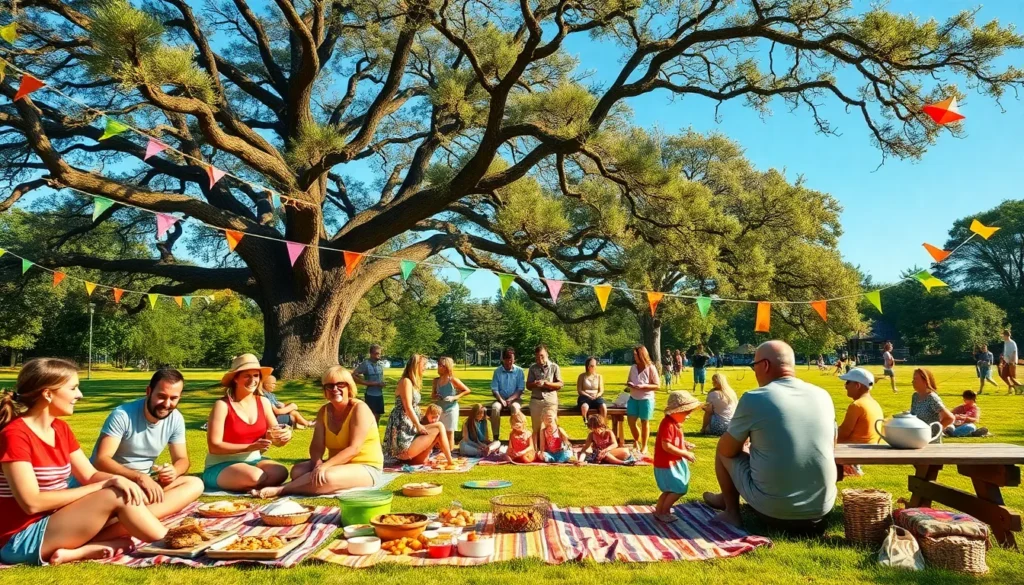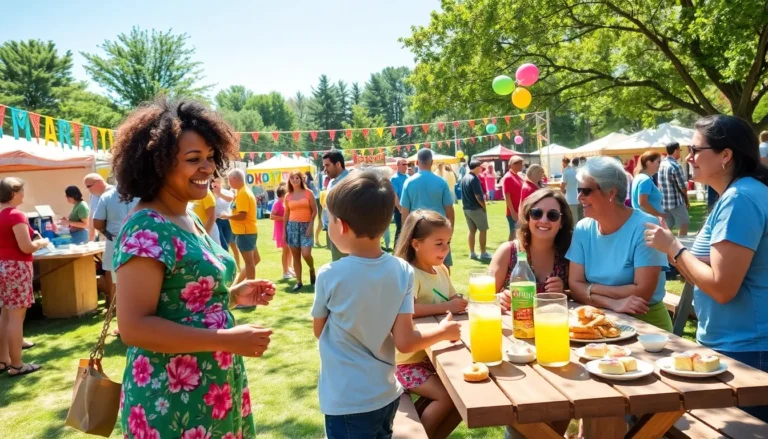Table of Contents
ToggleIn today’s economy, finding ways to enjoy life without very costly has become increasingly important. Thrifty events allow individuals and communities to come together for memorable experiences while keeping expenses low. Whether it’s a birthday party, a wedding, or a community gathering, understanding how to plan and execute these events can not only save money but also create extraordinary memories. This article will investigate into the concept of thrifty events, explore various types, provide actionable planning tips, and highlight successful examples, offering readers a comprehensive guide to maximizing fun on a budget.
Understanding the Thrifty Events Concept

Thrifty events are more than just budget-friendly gatherings: they embody creativity and resourcefulness. The essence of a thrifty event lies not in what one spends but in how experiences are curated. By cleverly utilizing available resources, individuals can host events that are equally enjoyable as their high-cost counterparts. With a growing interest in sustainable living, thrifty events promote environmental consciousness by reducing waste and relying on local resources, thereby strengthening community bonds.
Types of Thrifty Events
Thrifty events can take many forms, each offering unique experiences:
1. Potluck Dinners
These gatherings encourage guests to bring a dish, reducing the host’s costs while showcasing diverse culinary talents.
2. Community Picnics
Held in local parks, these events foster community spirit with games, food, and music, all at little to no cost.
3. DIY Workshops
Hosting workshops allows participants to learn new skills like pottery or painting, often using inexpensive or repurposed materials.
4. Backyard Movie Nights
Using a projector and a blank wall, hosts can create a movie theater experience in the comfort of home, complete with blankets and homemade popcorn.
5. Seasonal Festivals
Local celebrations integrating crafts, food, and games can offer family fun without hefty price tags. Many towns organize free or low-cost festivals celebrating seasonal events.
Planning Your Thrifty Event
To successfully plan a thrifty event, several steps should be followed:
1. Set a Budget
Clearly outline what is feasible without strain. Allocate funds for essentials like venue and food, while keeping track of unexpected costs.
2. Choose the Right Venue
Look into community centers, parks, and even homes as potential venues. Utilizing public spaces can save significant money.
3. Create a Guest List
Keep it manageable. A smaller guest list can lead to a more intimate gathering and help in controlling costs.
4. Plan Activities
Integrate games and activities that demand little to no money yet ensure laughter and engagement, think scavenger hunts or craft stations.
5. Use Local Resources
Consider collaborating with local businesses for sponsorship or donations, which can help defray costs and build relationships within the community.
Tips for Budget-Friendly Event Execution
Executing a thrifty event requires attention to detail:
1. Get Creative with Decor
Use items you already own or consider upcycling old decorations. Nature can also provide free decor, think flowers, branches, and leaves.
2. Limit Alcohol
If alcohol is served, consider a signature cocktail instead of a full bar. Alternatively, encourage guests to bring their own drinks for a potluck-style approach.
3. Leverage Technology
Use social media and free event platforms to promote your event instead of spending on advertising. Bootstrapping digital marketing can reach vast audiences at minimal costs.
4. Seek Volunteers
Encourage friends and family to help with setup, food preparation, and entertainment. This not only cuts costs but also fosters community spirit.
5. Prioritize Essentials
Focus on the elements that matter most to the experience, food, activities, and atmosphere, while avoiding unnecessary splurges.
Marketing Your Thrifty Event
Promoting a thrifty event can be both economical and effective:
1. Use Social Media
Platforms like Facebook and Instagram provide free promotion avenues. Create engaging posts and event pages to attract attendees.
2. Engage with the Community
Post flyers in local businesses or community boards, bringing a personal touch to the marketing strategy.
3. Email Newsletters
Use mailing lists to inform previous attendees of upcoming events. Maintaining communication helps build a loyal audience.
4. Collaborate with Local Influencers
Partnering with local influencers can enhance reach without hefty marketing budgets. They often enjoy supporting community events, benefiting both parties.
5. Offer Early Bird Discounts
Encouraging early sign-ups through discount tickets can stabilize cash flow and help gauge the expected turnout.
Success Stories: Real-Life Thrifty Events
Examining successful thrifty events can inspire new ideas:
1. Neighborhood Block Party
In a small town, residents organized a block party where each family contributed a dish and hosted games. This brought the community together at minimal costs and revitalized local camaraderie.
2. Craft Fair Fundraiser
A local school hosted a craft fair where vendors paid a small fee. Families showcased their crafts, raising funds while keeping costs down, as most items were handmade or donated.
3. Outdoor Concert
An aspiring musician organized a neighborhood concert in a local park, relying solely on donations and community sponsorship. This event not only entertained but also promoted local talent without significant expenditure.
Conclusion
Thrifty events provide an invaluable opportunity for individuals and communities to gather and celebrate without financial strain. By understanding the concept, exploring various types, and meticulously planning and executing these events, anyone can create lasting memories on a budget. With creativity and community support, fun doesn’t have to be expensive, it can be meaningful, engaging, and full of joy.





